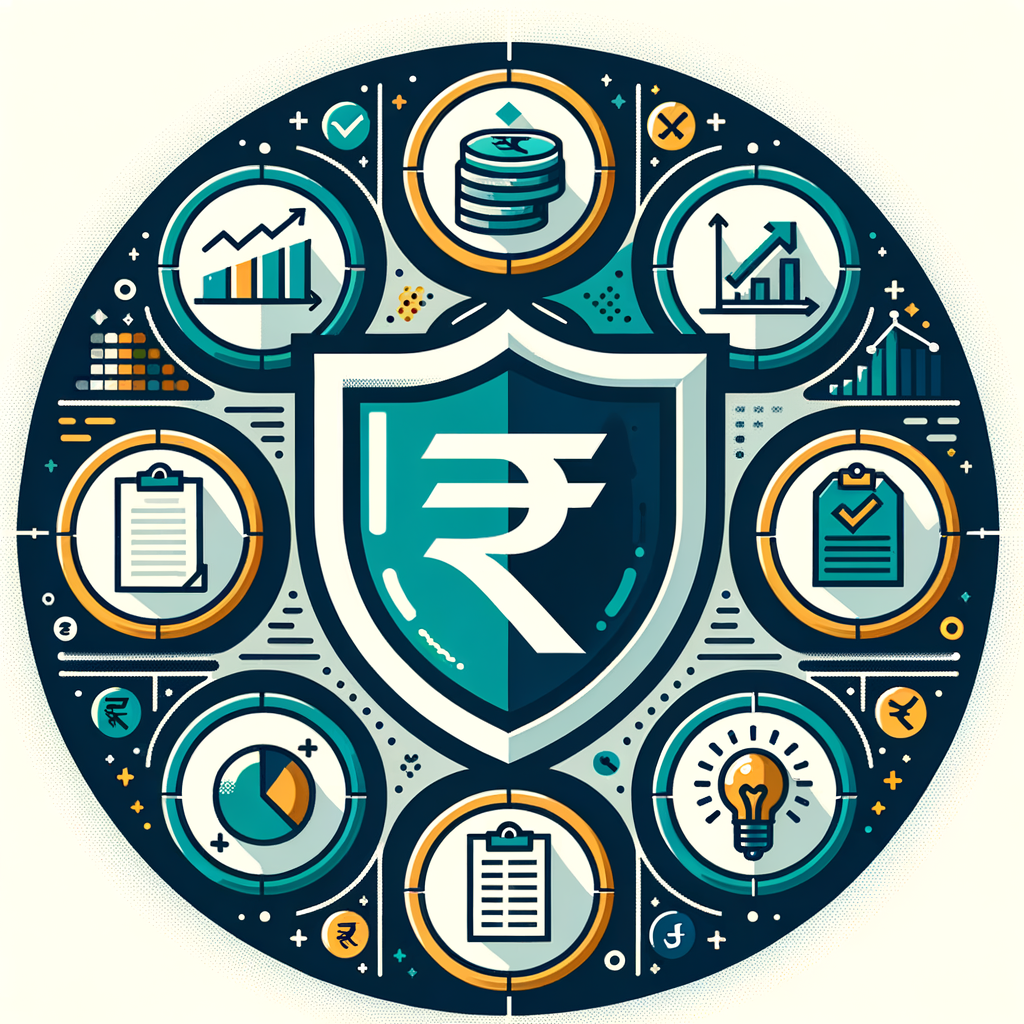Debt Management for the Self-Employed: Unique Challenges and Solutions
Imagine this: You’re a freelance designer who just landed a massive project, and the relief is immense. But as you celebrate, a nagging thought creeps in. How will this single payment cover the credit card bills and EMIs you racked up during the last two lean months? This scenario is all too common for India’s booming self-employed population. While financial freedom is the ultimate goal, debt can feel like a constant roadblock. This is because effective debt management for self-employed professionals requires a completely different playbook compared to their salaried counterparts. The primary challenges—navigating irregular income streams, proving your creditworthiness to lenders, and the often-blurry line between personal and business finances—demand a unique approach. This guide will provide actionable strategies and practical solutions tailored to the Indian context, helping you master the art of managing debt as a self-employed professional and reclaim your financial peace of mind.
The Unique Self-Employed Debt Challenges in India
Before finding solutions, it’s crucial to understand the specific hurdles that freelancers, consultants, and small business owners face. These self-employed debt challenges in India stem from the very nature of independent work, creating a financial landscape that is far less predictable than a traditional 9-to-5 job. Overcoming these requires acknowledging them head-on.
The Rollercoaster of Irregular Income
For a salaried individual, financial planning is built on a predictable foundation: a fixed salary credited to their account on a specific date each month. This makes budgeting for fixed obligations like loan EMIs, rent, and credit card payments straightforward. The self-employed professional, however, lives on a financial rollercoaster. You might have a high-income month followed by a period with little to no new revenue. This unpredictable cash flow turns fixed monthly debt payments into a source of constant stress. When payments are due, you might be forced to dip into savings, or worse, use a credit card to cover another debt, creating a dangerous cycle that is difficult to break.
The Credibility Hurdle: Proving Your Worth to Lenders
When you apply for a loan, banks and financial institutions look for stability and proof of repayment capacity. For salaried employees, a Form 16 and recent salary slips are golden tickets. For the self-employed, proving your financial health is more complex. Lenders often view variable income as a higher risk, which can lead to loan rejections or offers with much higher interest rates. To overcome this credibility hurdle, you must be diligent with your documentation. Your financial toolkit must include:
- Consistently filed Income Tax Returns (ITRs) for at least the last two to three consecutive years.
- A healthy CIBIL score, ideally above 750, which demonstrates a history of responsible credit behaviour. You can learn How to Track Your Credit History Using Your PAN Card Via CIBIL to stay on top of this critical metric.
- Clean and detailed bank statements that show a steady flow of business income over several months.
The Dangerous Mix: Personal vs. Business Finances
One of the most common and damaging mistakes self-employed individuals make is using a single savings account and personal credit card for both business expenses and household needs. This financial entanglement creates chaos. It becomes nearly impossible to accurately track your business’s profitability, identify deductible expenses for tax purposes, or understand your true cash flow. Properly, you must Set Up An Accounting System for My Small Business to maintain clarity. This messy financial picture not only complicates your own accounting but also raises red flags for potential lenders who cannot easily distinguish business revenue from personal funds. This is one of the most significant unique debt issues for freelancers in India, as it directly impacts your ability to manage finances and secure future funding.
The Tax Trap: GST and Advance Tax Burdens
As a salaried employee, your income tax is neatly deducted at the source (TDS) by your employer. As an entrepreneur, you are responsible for your own tax compliance, and this can be a rude awakening. Learning the nuances of Filing Tax Returns for Freelancers and Consultants is the first step. You must plan for quarterly Advance Tax payments and, depending on your turnover, monthly or quarterly Goods and Services Tax (GST) filings and payments. These statutory obligations are non-negotiable. If you haven’t planned for them, they can drain your cash flow precisely when you need it for loan repayments or other business expenses. Failing to pay on time results in hefty penalties and interest, effectively creating a new form of debt owed to the government.
Proactive Strategies for Self-Employed Debt Management in India
Managing debt effectively when you’re self-employed isn’t just about paying bills; it’s about building a robust financial system that can withstand income volatility. These proactive strategies for self-employed debt management India focus on creating discipline, predictability, and a safety net to protect you from financial shocks.
Master Your Cash Flow with a Percentage-Based Budget
A traditional budget that allocates fixed rupee amounts to categories is often impractical for those with fluctuating income. A far more effective approach is the percentage-based system. Instead of thinking in fixed amounts, you allocate a percentage of every single payment you receive to different “envelopes” or accounts. This method scales with your income—when you earn more, you save and invest more; when you earn less, your essential spending is still covered.
Here’s a sample allocation you can adapt:
- 50% for Living Expenses: This covers your non-negotiables like rent/home loan EMI, utility bills, groceries, and transportation.
- 30% for Taxes and Savings: This is the most crucial part. The moment you receive a payment, immediately transfer 30% of it to a separate high-yield savings account. This fund covers your Advance Tax, GST, and also builds your long-term savings.
- 20% for Debt & Lifestyle: This portion is allocated to paying off existing debt (credit cards, personal loans) and discretionary spending like entertainment or shopping.
Build a Financial Safety Net: Your Emergency Fund
For a self-employed professional, an emergency fund is not a luxury; it is an absolute necessity. This fund is your primary defence against taking on new debt during lean months or unexpected crises. While salaried individuals are often advised to have 3-6 months of expenses saved, the self-employed should aim higher due to income unpredictability. Your target should be to save 6 to 12 months’ worth of essential living expenses. Remember, this is based on your essential survival costs (rent, food, bills), not your total average income. This financial cushion gives you the breathing room to navigate slow business periods without panicking and reaching for a high-interest credit card.
Create a Clear Boundary: Separate Your Finances
This is one of the simplest yet most powerful steps you can take. To gain control over your finances and present a professional image to lenders, you must create a clear separation between your business and personal money.
- Open a separate Business Current Account: All your business income should be deposited here, and all business expenses should be paid from this account.
- Get a Business Credit Card: If you need a credit card for business expenses, get one dedicated solely to that purpose.
- Pay Yourself a “Salary”: On a fixed date each month, transfer a set amount (or a percentage, based on your budget) from your business account to your personal savings account. This becomes your personal income to manage.
This separation simplifies accounting, makes tax filing significantly easier, and demonstrates financial discipline to banks. For professional help with this, consider TaxRobo’s Accounts Service.
Plan for Taxes to Avoid Nasty Surprises
Never treat your entire invoice amount as your income. A significant portion of it belongs to the government. The best way to manage this is to “pay the government first.” Adopt the discipline of transferring 20-30% of every single payment you receive into a separate “Tax Savings Account.” This is the same account you use for the 30% allocation in your percentage-based budget. When your Advance Tax and GST due dates arrive, the money is already set aside and waiting. This proactive approach transforms a stressful, cash-draining event into a simple, planned transaction, preventing you from ever having to borrow money to pay your taxes. You can find the official due dates on the Income Tax Department’s page on Advance Tax.
Finding the Right Debt Solutions for Self-Employed in India
While proactive strategies prevent future debt, you also need a plan to tackle existing liabilities. Choosing the right approach depends on the nature of your debt and your personal financial psychology. Here are some proven debt solutions for self-employed in India to help you get back on track.
Choose Your Battle Plan: Debt Snowball vs. Debt Avalanche
When you have multiple debts, deciding which one to pay off first can be overwhelming. Two popular methods offer a clear path forward.
| Method | How It Works | Best For |
|---|---|---|
| Debt Snowball | You focus on paying off the smallest debt first, regardless of the interest rate, while making minimum payments on all others. Once the smallest is cleared, you roll that payment amount onto the next smallest debt. | Individuals who need quick, motivating wins to stay on track. The psychological boost of clearing a debt can build powerful momentum. |
| Debt Avalanche | You focus on paying off the debt with the highest interest rate first, while making minimum payments on the rest. Once the high-interest debt is gone, you attack the one with the next-highest interest rate. | Individuals who are disciplined and motivated by saving the maximum amount of money over time. Mathematically, this is the most efficient method. |
Choose the method that aligns with your personality. The “best” plan is the one you will consistently stick with.
Consolidate Your Debt with a Personal Loan
If you are juggling multiple high-interest debts, such as several credit card balances and a personal loan, debt consolidation can be a powerful tool. This involves taking out a single, new personal loan at a lower interest rate to pay off all your other outstanding debts. The primary benefit is simplification—you now have only one EMI to manage instead of several payments. More importantly, a lower interest rate means more of your payment goes toward the principal, helping you clear the debt faster and save money. To get approved, you will need to present the strong financial documentation mentioned earlier: your last 2-3 years of ITRs, clean bank statements, a good CIBIL score, and proof of business registration. Be sure to watch out for processing fees and only work with reputable lenders.
Don’t Be Afraid to Negotiate with Your Lenders
Many people assume that the terms of a loan or credit card are set in stone. This isn’t always true. If you are struggling to make payments but have a history of being a responsible customer, your bank may be willing to work with you. Proactively contact your lender before you miss a payment. You can often negotiate for better terms.
Consider asking for:
- A temporary reduction in your interest rate.
- A moratorium, which is a temporary pause on EMI payments for a few months to help you get through a lean period.
- Converting a large outstanding credit card balance into a more manageable EMI plan with a lower interest rate.
Your chances of success are much higher if you have maintained a good relationship and a solid payment history with the institution.
Conclusion
The path of a self-employed professional in India is filled with both immense opportunity and unique financial challenges. While debt can feel like a heavy burden, it is not an insurmountable one. By understanding the specific hurdles of variable income and lender perceptions, you can build a resilient financial foundation. The keys to success are discipline and a proactive system: budgeting for your actual cash flow, diligently separating business and personal finances, building a robust emergency fund, and planning for taxes from day one. These proactive measures, combined with smart strategies for tackling existing liabilities, are the pillars of effective debt management for self-employed individuals. It’s about taking control and creating systems that support your entrepreneurial journey, not hinder it.
Stop letting debt control your entrepreneurial journey. Let TaxRobo’s experts help you streamline your accounting and tax filing, building a strong financial foundation for a debt-free future. Contact us for a consultation today!
Frequently Asked Questions (FAQs)
1. As a self-employed person in India, how can I improve my chances of getting a loan?
Answer: Focus on building a strong financial profile. File your ITRs on time every year for at least three consecutive years, maintain a CIBIL score above 750, keep your business and personal bank accounts separate and clean to show clear cash flow, and register your business (e.g., as a proprietorship, LLP) to show legitimacy and professionalism to lenders.
2. What’s the best way to handle credit card debt when my income is unpredictable?
Answer: During lean months, ensure you make at least the minimum payment to avoid penalties and a negative CIBIL impact. Use your emergency fund for essentials to avoid adding new debt. During high-income months, be aggressive and pay off much more than the minimum amount, targeting the highest-interest card first (the Debt Avalanche method) to save the most money.
3. Is it a good idea to take a personal loan to pay my Advance Tax?
Answer: This should be a last resort. Taking a loan to pay taxes is a sign of poor cash flow management and creates a debt cycle where you are borrowing to pay a statutory due. The better strategy, as mentioned in our guide, is to create a dedicated “Tax Savings Account” and set aside a portion (20-30%) of every single income you receive. This ensures the funds are available when your tax payments are due.
4. How does proper GST filing help in managing my overall debt?
Answer: Timely GST filing and payment does two crucial things. First, it helps you avoid hefty penalties and interest charges from the government, which can add to your overall debt burden. Second, a clean and consistent GST compliance record acts as powerful proof of your business’s activity and financial discipline. This significantly improves your credibility with lenders when you need to apply for a business loan, potentially securing you better terms and lower interest rates. For expert assistance, consider TaxRobo’s GST Service.



